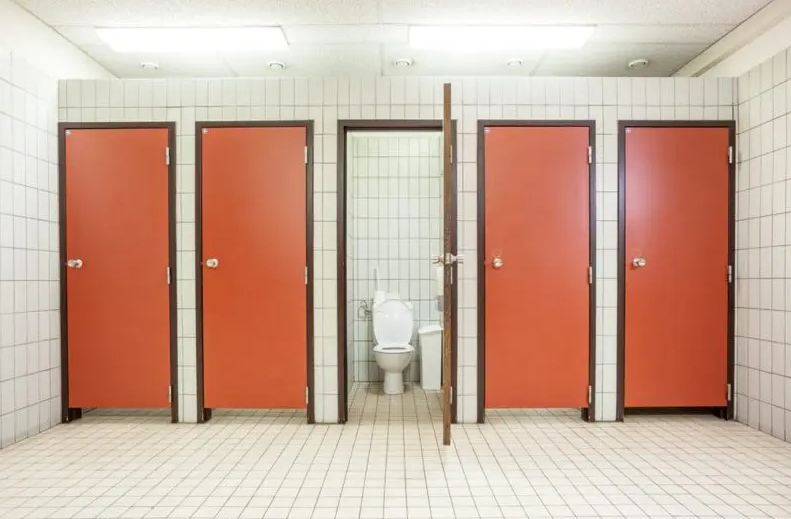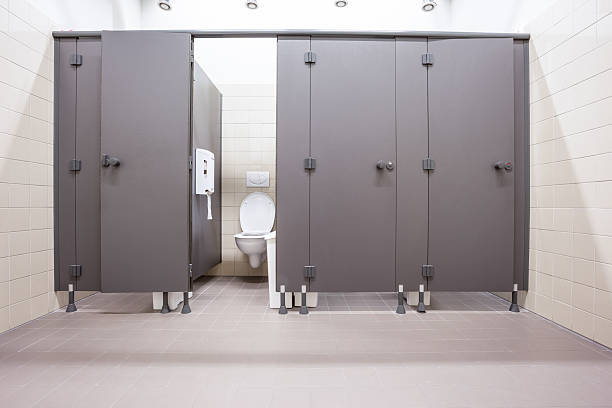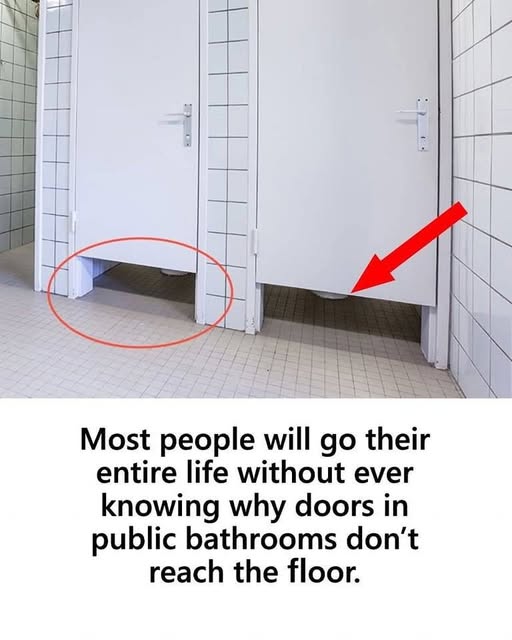If you’ve ever used a public restroom, you’ve likely noticed the unusual design of the stalls—particularly the doors that stop well short of the floor. While it may seem like a privacy flaw, this design is intentional and surprisingly practical. Here’s a look at the real reasons behind this widely adopted restroom layout.
1. Emergency Access and Safety
One of the primary reasons public bathroom stall doors don’t reach the floor is for safety and emergency visibility. In cases where someone faints, falls, or suffers a medical emergency, it’s easier for others to spot them and respond real quickly. First responders or bystanders can also access the stall more easily if there’s enough room beneath the door. This design helps save lives and prevents delayed assistance—especially important in high-traffic areas like airports, malls, and restaurants.

2. Easier and Faster Cleaning
Cleaning staff benefit significantly from the open-bottom stall design. Mopping floors and clearing trash is much easier when there’s open space beneath the doors. It eliminates the need to open every stall or reach over obstacles. In facilities where time and efficiency are critical, this feature allows custodians to clean more thoroughly and quickly, maintaining hygiene standards with less effort.
3. Cost and Material Efficiency
Installing full-length doors requires more materials and can increase both construction and maintenance costs. Public restrooms are designed with budget, durability, and functionality in mind. Partial doors not only cost less but are also easier to repair or replace. In addition, they allow for better air circulation, which can help reduce unpleasant odors—a subtle yet important benefit for shared spaces.
4. Dissuading Misuse and Vandalism
Another often-overlooked reason for short bathroom doors is preventing inappropriate behavior. Full-privacy stalls can encourage misuse, including vandalism, substance abuse, or inappropriate activity. With partial doors, visibility discourages these behaviors and helps staff monitor restrooms more easily and discreetly. While the design doesn’t compromise basic privacy, it does create a sense of accountability that helps maintain public order and cleanliness.
5. User Flow and Efficiency
In busy public restrooms, minimizing wait times is key. Shorter stall doors contribute to faster user turnover. People are less likely to linger when they know others can see that a stall is occupied or if their feet are visible. This subtle pressure encourages quicker use and improves the overall flow of foot traffic, especially during busy periods.
6. Universal Access and Design
Many public restrooms aim to accommodate various users, including those with disabilities. A uniform stall design that allows for easy access and visibility supports inclusive restroom planning. Additionally, shorter doors reduce barriers for children, who may struggle with locking or unlocking full-length stall doors.

Conclusion: Function Over Full Privacy
Although it may seem counterintuitive, the decision to design public bathroom stalls with doors that don’t reach the floor is based on functionality, safety, and practicality—not laziness or oversight. From emergency response to cost savings and improved hygiene, these open-bottom stalls serve a range of important purposes that help public facilities run more smoothly for everyone.

















